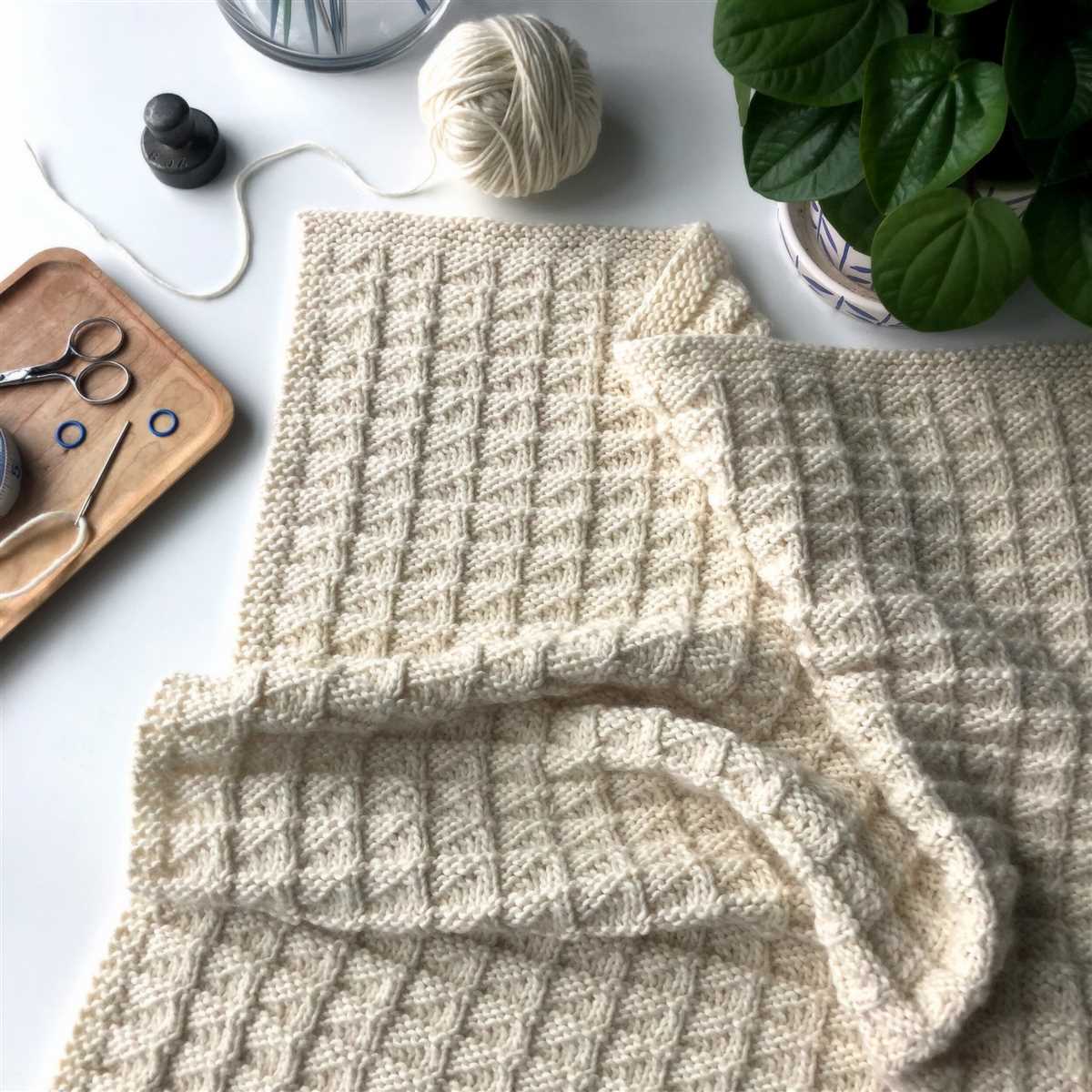
Are you a beginner knitter looking for a fun and easy project to help you develop your skills? Look no further! We have the perfect pattern for you – a free easy blanket knitting pattern. This pattern is perfect for beginners as it uses basic stitches and techniques that are easy to learn.
This easy blanket pattern features a simple but beautiful design that is sure to impress. Whether you’re knitting for yourself or for a loved one, this blanket will be a cherished item for years to come. The pattern is versatile and can be easily customized to fit your desired size and color palette.
With this free pattern, you’ll be able to practice your knitting skills while creating a cozy and stylish blanket. The pattern includes detailed instructions and helpful tips, making it perfect for beginners who want to improve their knitting abilities while enjoying the process. So grab your needles and yarn, and let’s get started on this easy and rewarding project!
Choosing the right yarn for your blanket
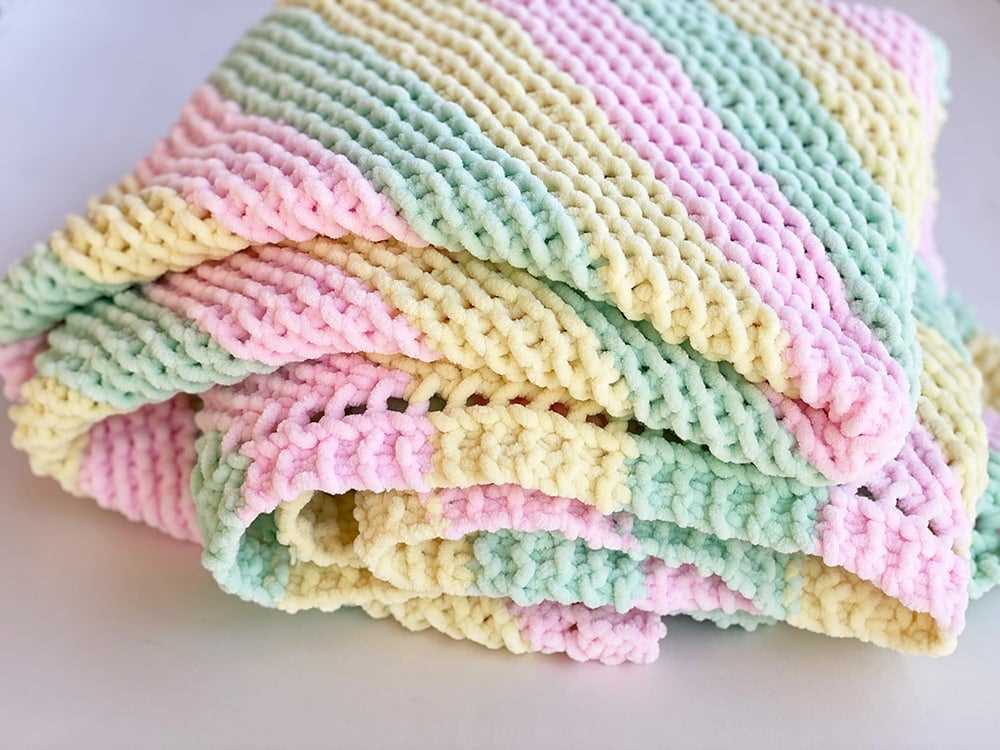
When it comes to knitting a blanket, choosing the right yarn is essential for achieving the desired texture, warmth, and durability. With so many options available, it can be overwhelming to make a decision. However, understanding the characteristics of different types of yarn can help guide your choice.
1. Weight: Consider the weight of the yarn, as it determines the thickness and heaviness of the blanket. For beginners, a medium or worsted weight yarn is often recommended as it is easier to work with and creates a balanced fabric.
2. Fiber: The fiber content of the yarn will greatly influence the blanket’s feel and performance. Natural fibers like wool, cotton, and alpaca offer warmth and breathability, while synthetic fibers like acrylic and polyester provide durability and easy care. Choose a fiber that suits your preferences and the intended use of the blanket.
3. Texture: Consider the desired texture of your blanket. Smooth yarns create a clean and polished look, while yarns with a fuzzy or textured surface can add interest and depth to the finished project. Experiment with different textures to achieve the desired effect.
4. Color: The color of the yarn will also impact the overall look of your blanket. Solid colors create a classic and timeless aesthetic, while variegated or self-striping yarns can add visual interest and a playful touch. Consider the color scheme of your room or the recipient’s preferences when selecting yarn.
Remember to check the yarn label for specific care instructions and gauge recommendations, as these can also influence your choice. By considering the weight, fiber, texture, and color of the yarn, you can select the perfect yarn for your blanket knitting project.
Essential knitting tools for beginners
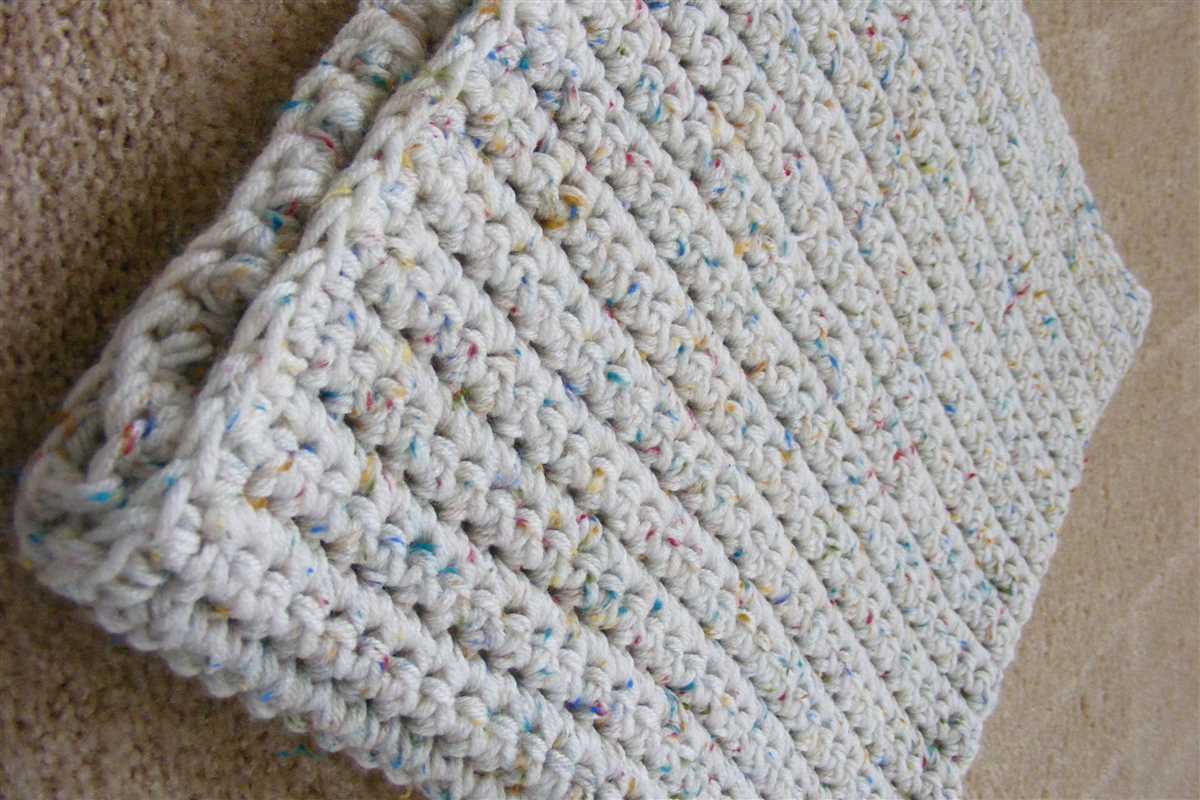
Starting a new hobby like knitting can be exciting and overwhelming at the same time. There are so many different tools and materials to choose from, it can be hard to know where to start. Here are some essential knitting tools that every beginner should have:
- Knitting needles: The most important tool in knitting is a pair of knitting needles. Beginners can start with a pair of straight needles, which are easier to handle. As you gain more experience, you may want to try circular needles or double-pointed needles for different types of projects.
- Yarn: Choosing the right yarn is crucial for your knitting project. Beginners should look for a medium-weight yarn in a solid color. Avoid slippery or fuzzy yarns, as they can be more difficult to work with. Choose a yarn with a smooth texture that is easy to hold and manipulate.
- Scissors: A good pair of scissors is essential for any knitting project. You will need them to cut the yarn, trim loose ends, and make any necessary adjustments. Look for small, sharp scissors that are easy to handle.
- Tape measure: A tape measure is necessary for measuring your progress and ensuring that your project is the right size. Look for a flexible tape measure that is easy to use and read.
- Tapestry needles: Tapestry needles are used for sewing or weaving in loose ends of yarn. They have a large eye and a blunt tip, which makes them easy to thread and use.
- Stitch markers: Stitch markers are small rings or clips that are used to mark specific stitches or sections in your knitting. They are especially helpful for keeping track of pattern repeats or shaping details.
- Row counter: A row counter is a small device that helps you keep track of the number of rows you have completed. It can be especially useful for complex patterns or projects with multiple stitch counts.
With these essential knitting tools, beginners will be well-equipped to start their first knitting project. Remember to start with simple patterns and take your time to practice and improve your skills. Happy knitting!
Understanding Basic Knitting Stitches
When it comes to knitting, understanding basic stitches is essential. These stitches form the foundation of many knitting patterns and projects. Whether you’re a beginner or an experienced knitter, having a solid grasp of these stitches will allow you to create beautiful and intricate designs.
One of the most basic stitches in knitting is the knit stitch. This stitch involves inserting the needle into the stitch on the left-hand needle, wrapping the yarn around the needle, and pulling it through to create a new stitch. The knit stitch produces a smooth and flat fabric, making it a popular choice for various projects.
Another important stitch is the purl stitch. This stitch is the reverse of the knit stitch, creating a bumpy texture on the fabric. To purl, the yarn is brought to the front of the work, and the needle is inserted from right to left into the stitch on the left-hand needle. The yarn is then wrapped around the needle and pulled through to create a new stitch.
A combination of knit and purl stitches creates different patterns and textures in knitting. The stockinette stitch, for example, is created by knitting one row and purling the next row. This stitch produces a smooth and even fabric with distinct knit and purl sides. Other common stitch patterns include ribbing, cables, and seed stitch.
By mastering these basic knitting stitches, you’ll have the skills and knowledge to tackle a wide range of knitting patterns. As you practice and experiment with different stitches, you’ll be able to create unique and personalized projects that showcase your creativity and expertise.
Basic Knitting Stitches Summary:
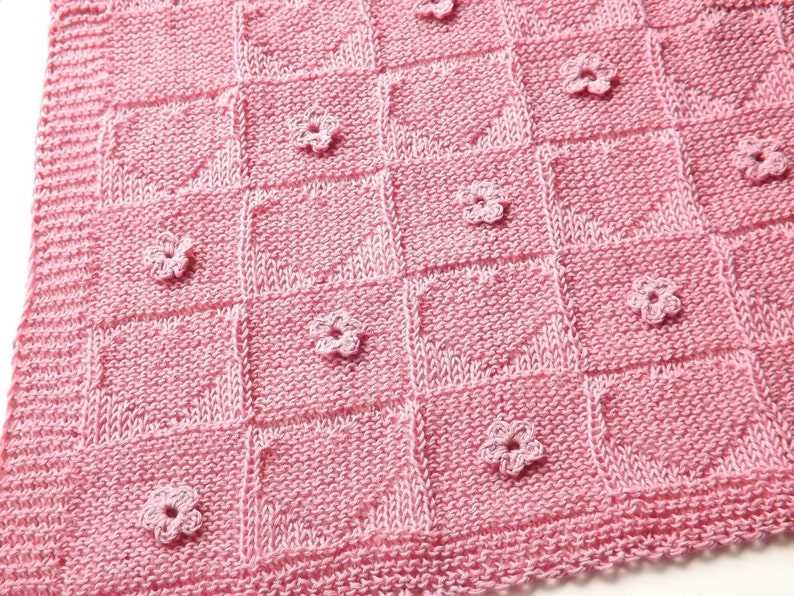
- Knit stitch: Insert needle, wrap yarn, pull through. Produces a smooth fabric.
- Purl stitch: Bring yarn to the front, insert needle, wrap yarn, pull through. Creates a bumpy texture.
- Combination of knit and purl stitches create different patterns and textures.
- Common stitch patterns include stockinette stitch, ribbing, cables, and seed stitch.
Getting started: casting on your first stitches
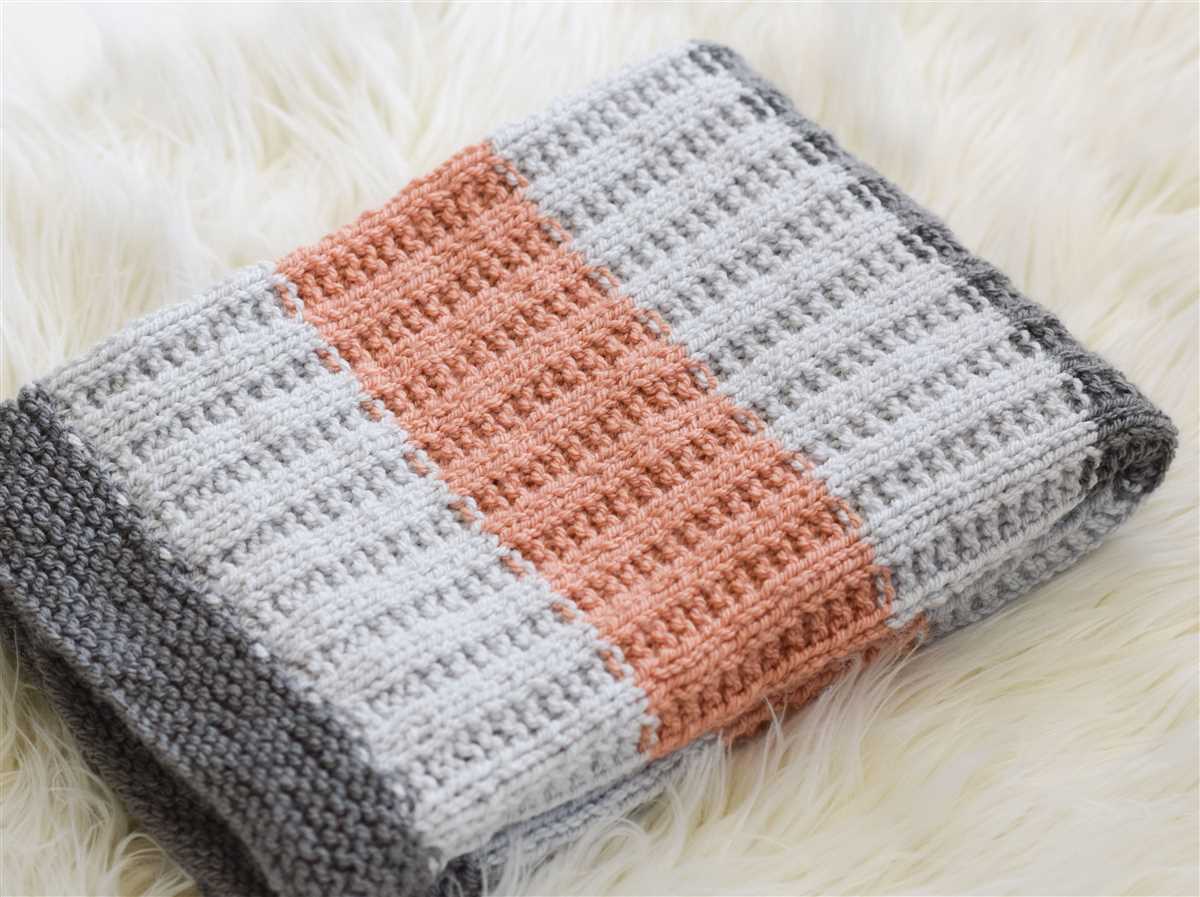
When starting a knitting project, the first step is to cast on your first stitches. Casting on is the process of creating the foundation row of stitches on your knitting needle. It is essential to get this step right, as it determines the size and shape of your project.
To cast on your first stitches, you will need a pair of knitting needles and your chosen yarn. There are several different methods for casting on, but the most common method for beginners is the long tail cast on. This method creates a neat and sturdy edge for your project.
Step 1: Hold the knitting needle in your right hand and make a slipknot about 6 inches from the end of the yarn, leaving a long tail.
Step 2: Insert the knitting needle into the slipknot and tighten it around the needle, ensuring it is not too tight or too loose.
Step 3: Hold the slipknot and the tail of the yarn with your left hand, keeping the working yarn (the yarn attached to the ball) over the index finger of your right hand.
Step 4: Insert the right needle into the slipknot, going under the left-hand yarn and over the right-hand yarn.
Step 5: Catch the right-hand yarn with the right needle and pull it through the loop on the left needle, creating a new stitch.
Step 6: Repeat steps 4 and 5 until you have cast on the required number of stitches for your project.
Once you are comfortable with the long tail cast on method, you can explore other casting on techniques such as the knitted cast on, the cable cast on, or the backward loop cast on. Each method has its advantages and is suitable for different knitting projects. Happy casting on!
The knitting pattern: simple and easy to follow
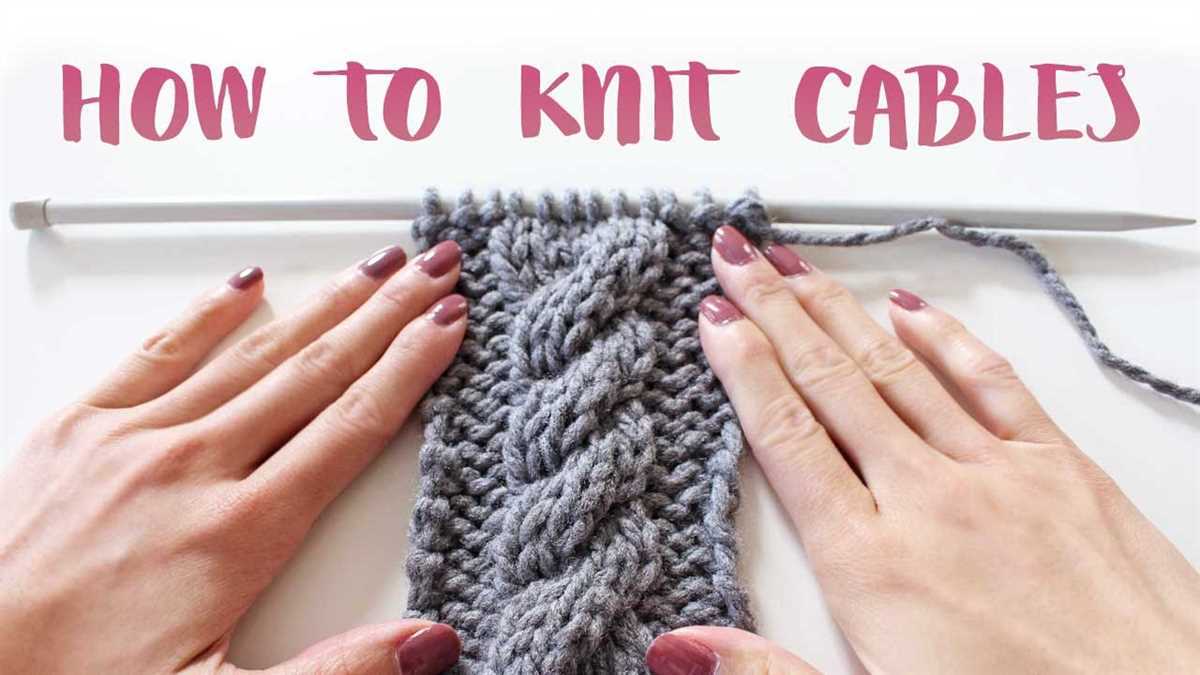
If you are a beginner and want to start knitting, this easy blanket knitting pattern is perfect for you. The pattern is simple and easy to follow, making it a great project for beginners.
The pattern uses basic knitting stitches such as knit and purl, so you don’t need to worry about complicated techniques. It also includes step-by-step instructions and a clear stitch diagram, making it easy to understand and follow along with.
Materials needed
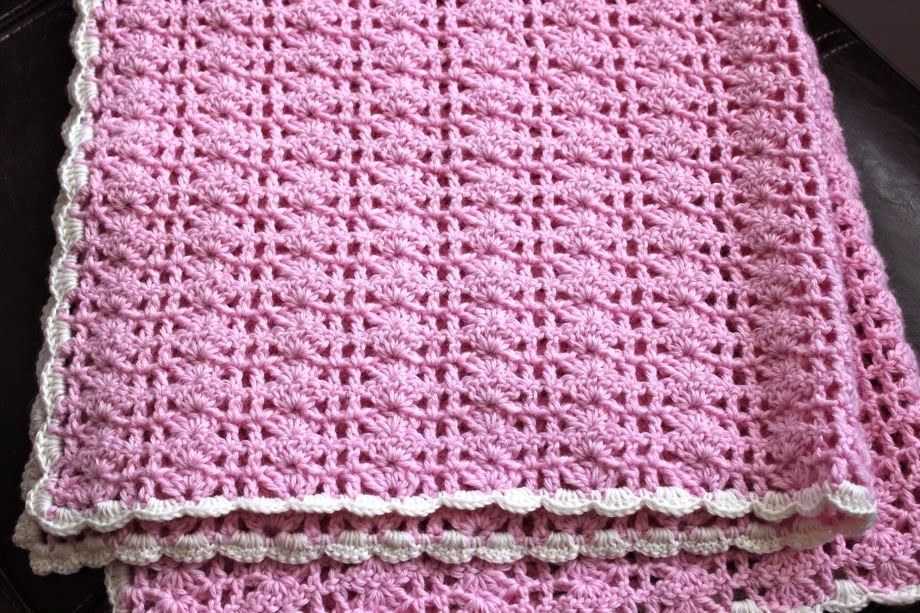
- Size 10 knitting needles
- Super bulky yarn in your desired color
- A pair of scissors
- A yarn needle
Pattern instructions
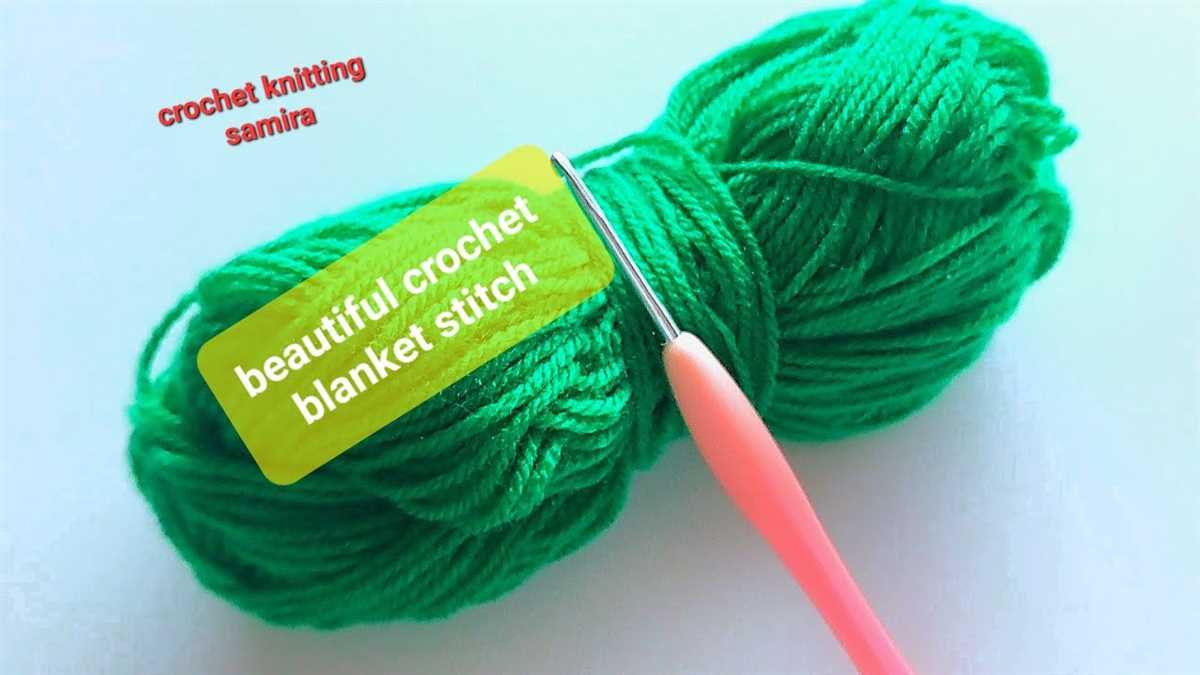
- Cast on 90 stitches.
- Row 1: Knit across.
- Row 2: Purl across.
- Repeat rows 1 and 2 until the blanket measures your desired length.
- Bind off all stitches.
- Weave in any loose ends using a yarn needle.
That’s it! With just a few simple steps, you can create a beautiful blanket. Feel free to experiment with different yarn colors or add some decorative stitches to make it your own. Happy knitting!
Adding Stripes or Patterns to Your Blanket
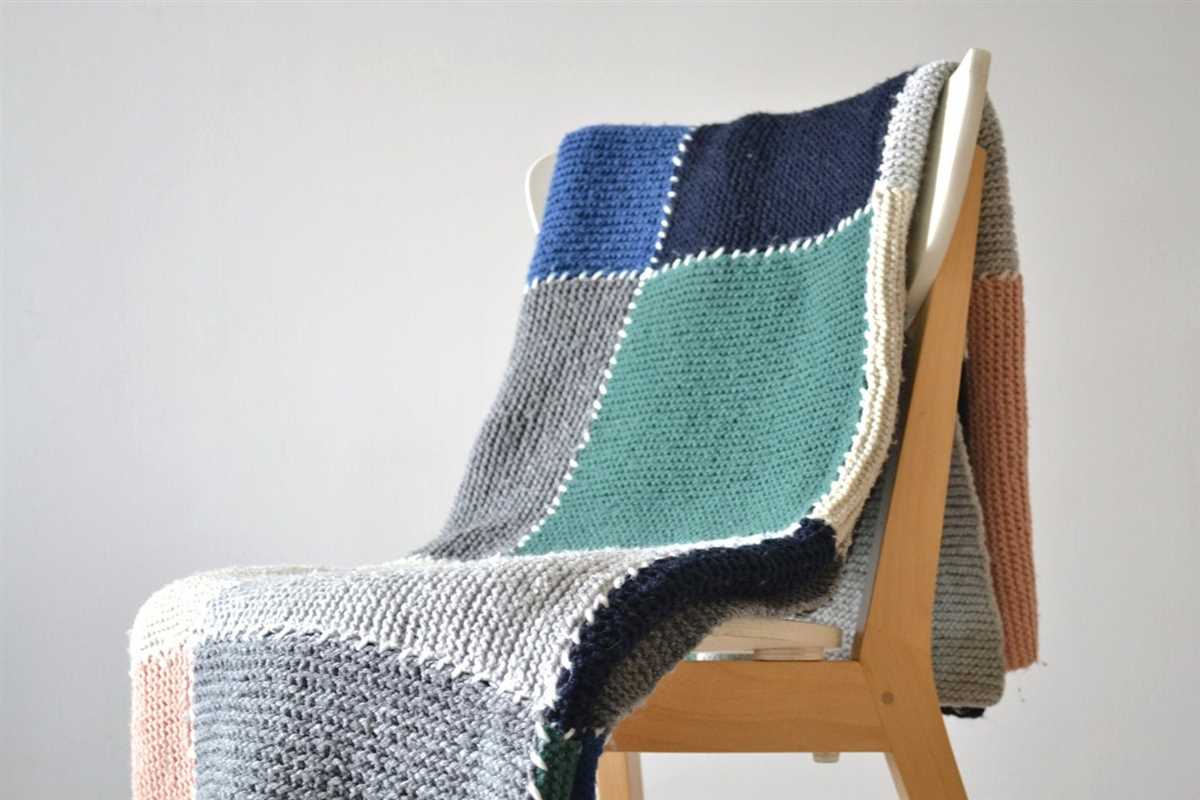
Looking to add a bit of visual interest to your blanket? Consider adding stripes or patterns to give it a unique and personalized touch. With a few simple techniques, you can create a stunning design that will make your blanket stand out.
One option is to create bold, contrasting stripes. Start by choosing two or more colors that complement each other well. You can use different shades of the same color for a more subtle effect, or go for high contrast with completely different hues. Knit several rows in one color, then switch to the next color, and so on. This creates a visually striking striped pattern that adds depth and dimension to your blanket.
If you’re feeling a bit more adventurous, try adding a pattern to your blanket. This could be as simple as using a different stitch, such as a seed or cable stitch, for a section of your blanket. You could also incorporate more complex patterns, such as a chevron or diamond motif. There are plenty of free knitting patterns available online that you can use as inspiration.
When adding stripes or patterns, it’s important to plan ahead and consider the overall look you want to achieve. Sketch out your design on paper or use a knitting design software to visualize how the different colors and patterns will work together. This will help you ensure that your finished blanket looks cohesive and balanced.
No matter what design you choose, adding stripes or patterns to your blanket is a great way to make it your own and showcase your knitting skills. Whether you’re a beginner or a more experienced knitter, experimenting with different designs can be a fun and rewarding process. So go ahead and get creative with your next blanket project!
Tips for Maintaining Consistent Tension in Your Knitting
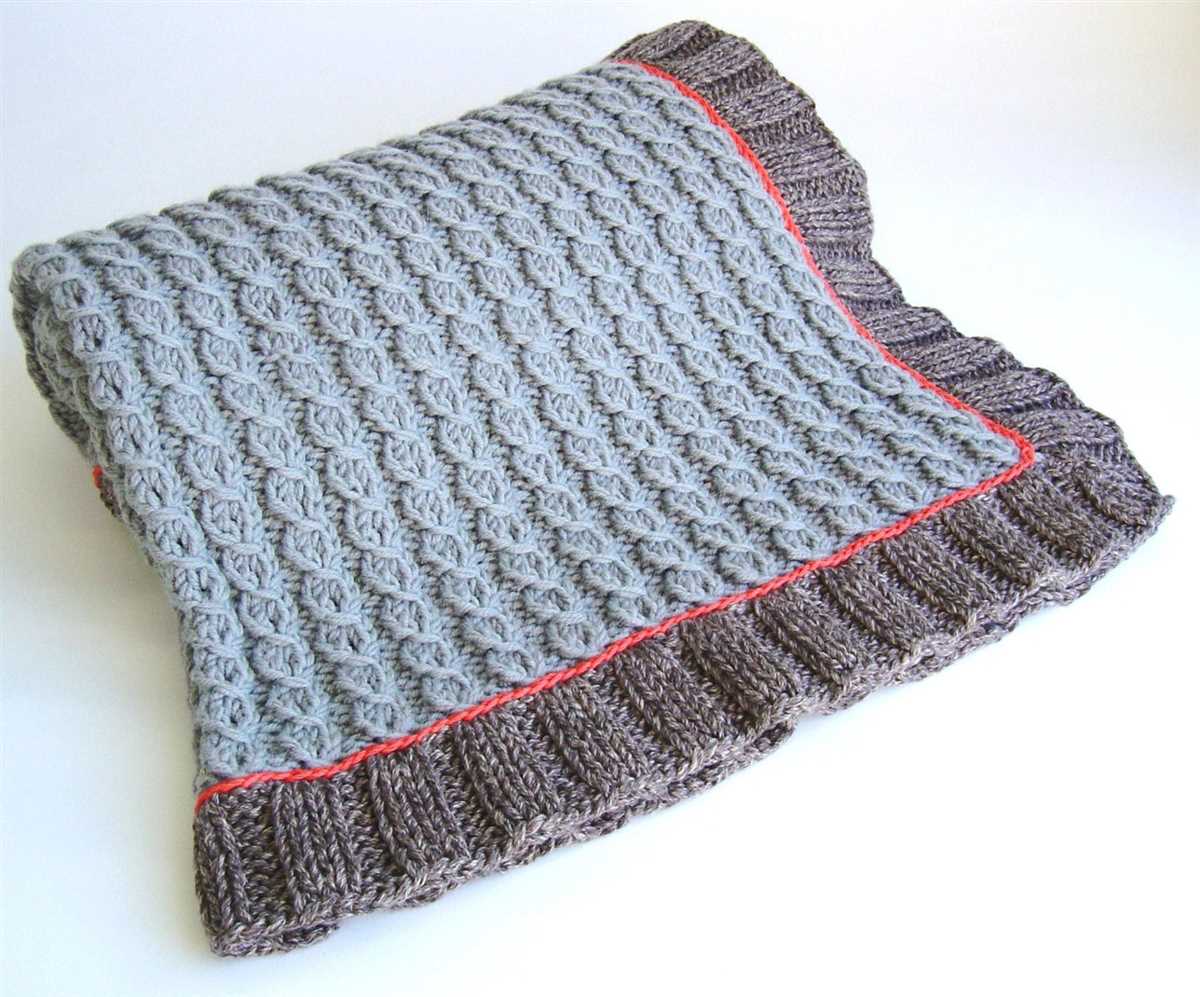
When knitting, maintaining consistent tension is key to creating an even and professional-looking finished product. Here are some tips to help you achieve and maintain consistent tension in your knitting:
1. Use the right needle size: Using the correct needle size for your yarn can make a big difference in your tension. If your stitches are too tight, try using larger needles, and if they are too loose, switch to smaller needles.
2. Relax your grip: Holding your knitting too tightly can cause your tension to be inconsistent. Try to relax your grip on the needles and yarn, allowing the stitches to flow more smoothly.
3. Practice even tension: Pay attention to the amount of tension you apply to each stitch. Try to keep the tension consistent throughout your knitting project. Practicing even tension on smaller projects can help improve your overall knitting technique.
4. Use stitch markers: Using stitch markers can help you keep track of your tension by marking specific points in your knitting. This can be especially helpful when working on complex patterns or projects that require a consistent tension.
5. Take breaks and stretch: Knitting for long periods of time can cause your hands and muscles to become tense, which can affect your knitting tension. Remember to take regular breaks and stretch your hands and wrists to keep them relaxed.
6. Control your yarn tension: Pay attention to how you’re holding the yarn and adjust your tension accordingly. Experiment with different techniques, such as wrapping the yarn around your fingers or using a yarn guide, to find what works best for you.
By following these tips and practicing regularly, you can improve your knitting tension and create beautiful, consistent projects.
Finishing off: binding off your stitches

As you near the end of your blanket knitting project, you will need to know how to bind off your stitches to finish the piece. Binding off, also known as casting off, is the process of securing your stitches and creating a neat edge. It is an essential skill for any knitter, whether you are a beginner or an experienced knitter.
To bind off, you will need to work with two stitches at a time. Start by knitting the first two stitches as you normally would. Then, using your left needle, lift the first stitch over the second stitch and let it drop off the right needle. You have now bound off one stitch.
Continue to knit the next stitch and repeat the process of lifting the previous stitch over the newly knitted stitch. Repeat this process until you have only one stitch left on your right needle. Cut your yarn, leaving a long tail, and pull it through the last stitch to secure it. Congratulations, you have successfully bound off your stitches and completed your blanket knitting project!
Blocking and finishing touches for a polished look
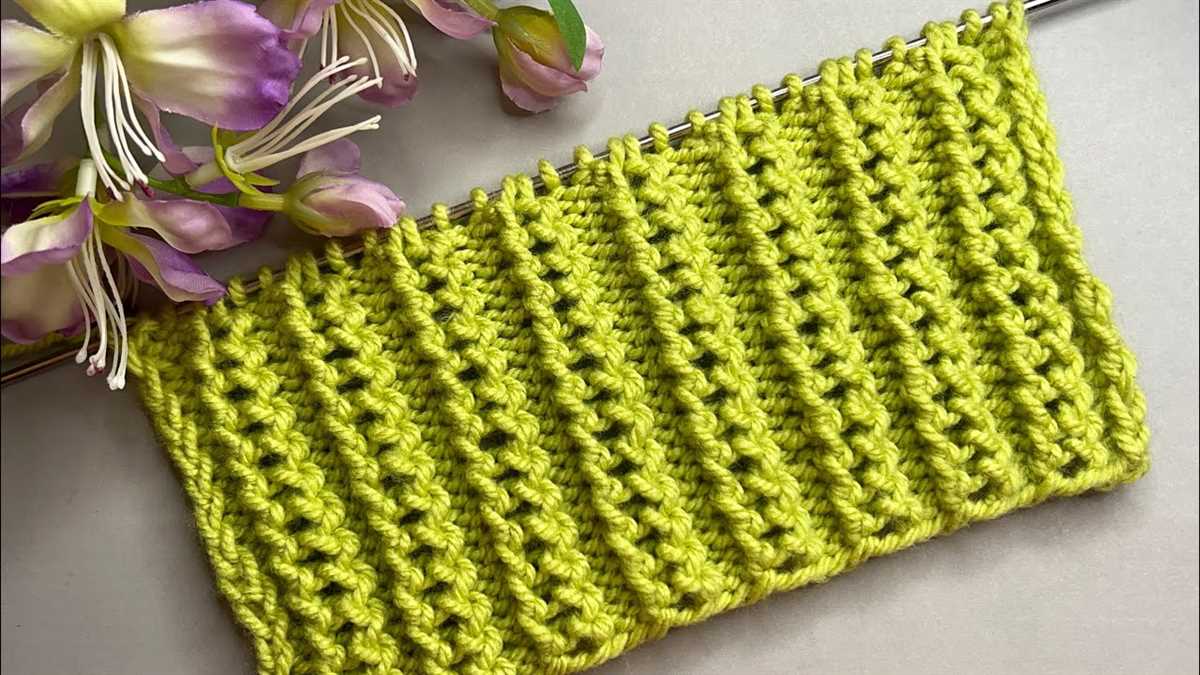
Once you have completed knitting your blanket, it’s time to give it a professional finish with blocking. Blocking involves shaping and stretching the knitted fabric to give it a more polished and even appearance.
The first step in blocking your blanket is to wet it. Fill a basin with lukewarm water and add a small amount of gentle detergent. Submerge the blanket in the water and gently squeeze to remove any air bubbles. Allow the blanket to soak for about 15 minutes. After soaking, carefully lift the blanket out of the water and gently squeeze out any excess water, making sure not to wring or twist the fabric.
Next, you will need to lay the blanket flat on a clean, dry towel. Gently roll up the towel with the blanket inside, pressing down to remove excess water. Once the majority of the water has been removed, unroll the towel and carefully transfer the blanket to a padded surface, such as a blocking board or an old mattress.
Using T-pins or blocking wires, secure the edges of the blanket to the surface, stretching and shaping the fabric as desired. Pay special attention to the corners and edges to ensure they are straight and even. Allow the blanket to dry completely in this position, which can take several hours or even overnight.
Once the blanket is dry, remove the pins or wires and give it a final inspection. Take the time to tidy up any loose threads or stitches, using a yarn needle to weave in any loose ends. If desired, you can add a decorative border or edging to further enhance the finished look of the blanket.
Finally, give your blanket a gentle shake to fluff up the fibers and remove any remaining wrinkles. Your completed blanket is now ready to be enjoyed, with a polished and professional appearance that will impress everyone who sees it.
Troubleshooting Common Knitting Mistakes
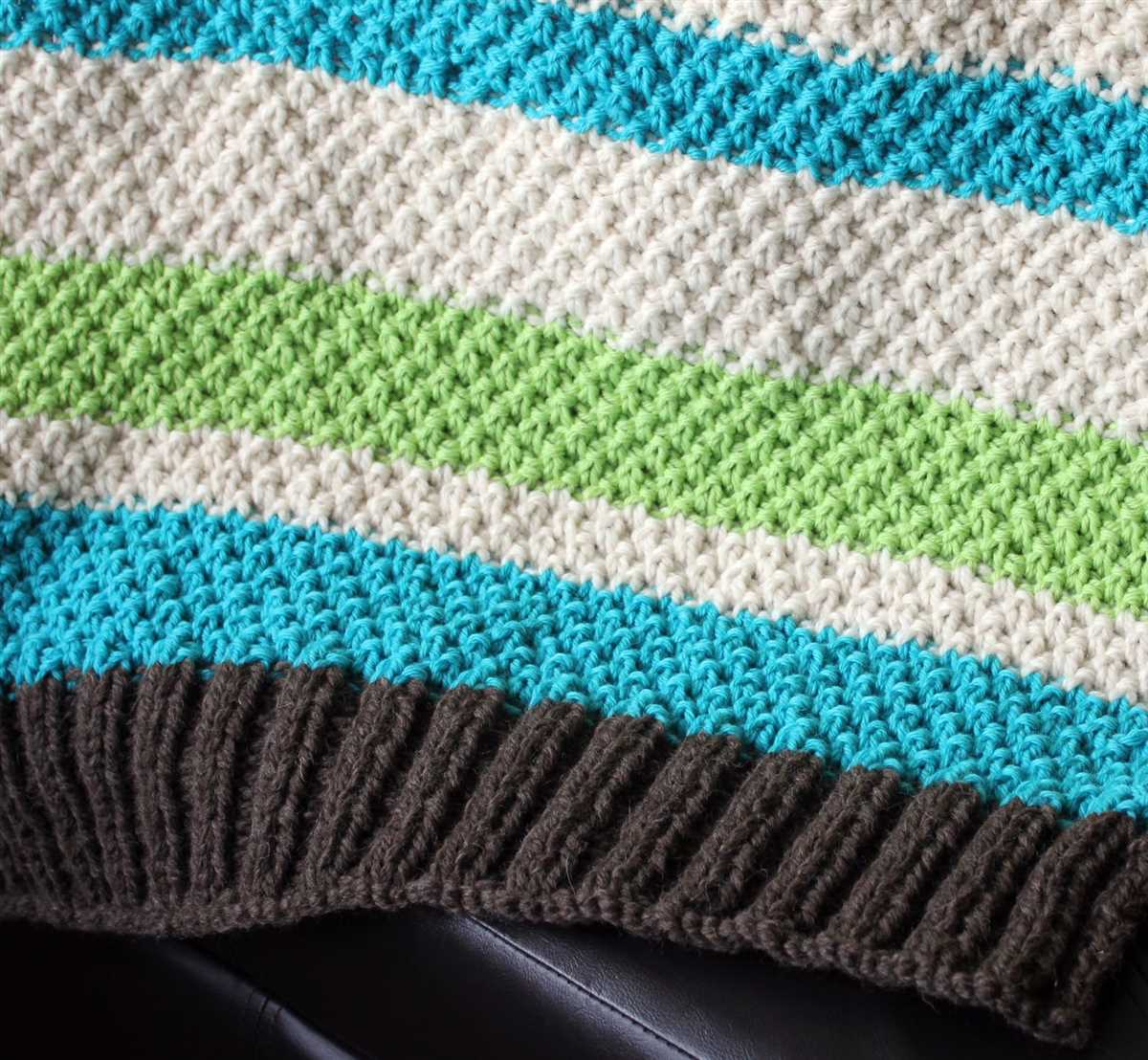
Knitting is a popular craft that allows you to create beautiful and cozy items, like blankets. However, even the most experienced knitters can make mistakes. Here are some common knitting mistakes beginners often encounter and how to troubleshoot them.
Dropped Stitches
One of the most common mistakes in knitting is dropping a stitch. This can happen when you accidentally let a stitch slip off the needle, causing a hole in your work. To fix this, you can use a crochet hook or a smaller knitting needle to pick up the dropped stitch and place it back on the needle. Ensure that the stitch is oriented correctly before continuing with your pattern.
Tight or Loose Tension
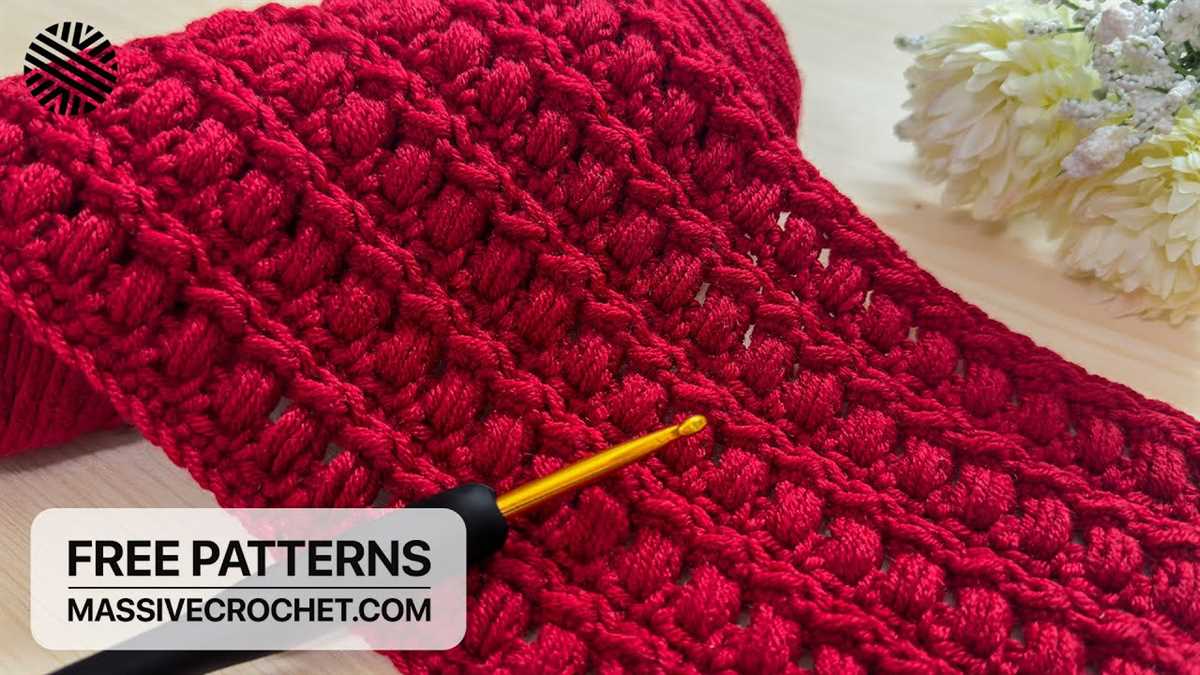
Tension refers to the tightness or looseness of your knitting stitches. If your tension is too tight, your fabric may be stiff and difficult to work with. On the other hand, if your tension is too loose, your fabric may have holes or gaps between stitches. To adjust your tension, you can try using a different size needle or changing your knitting technique. Practice and experimentation will help you find the right tension for your project.
Twisted Stitches
Twisted stitches occur when you accidentally twist the stitch on the needle, either by knitting into the back loop or purling through the back loop. This can create an uneven appearance in your fabric and affect the overall structure of your project. To fix twisted stitches, you will need to carefully unravel the affected rows until you reach the twisted stitch. Then, insert the needle through the stitch in the correct orientation and continue knitting as normal.
Uneven Gauge
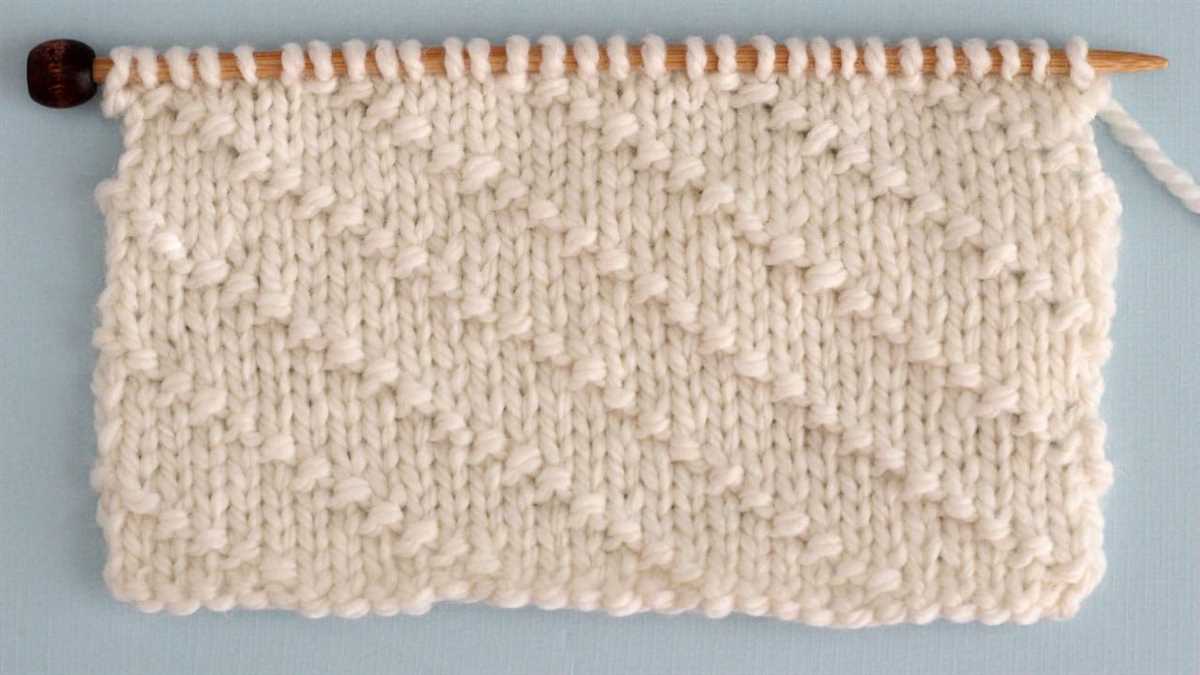
Gauge refers to the number of stitches and rows per inch in your knitting. Achieving the correct gauge is important for ensuring that your finished project matches the measurements specified in the pattern. If your gauge is too tight, you will need to switch to a larger needle size to create looser stitches. If your gauge is too loose, you can switch to a smaller needle size to create tighter stitches. Always swatch and measure your gauge before starting a project to avoid any sizing issues.
Remember, knitting is a learning process, and making mistakes is a natural part of that process. Don’t be discouraged if you encounter these common knitting mistakes – with practice and patience, you’ll become a skilled knitter in no time!
Sharing your finished blanket and finding more patterns
Once you have finished knitting your blanket, it’s time to share your accomplishments with others! Take pictures of your completed project and share them on social media using the hashtag #knittingblanket. You can also join online knitting communities and forums to show off your work and get feedback from fellow knitters.
If you enjoyed knitting your blanket and want to continue exploring this relaxing and creative hobby, there are plenty more patterns out there for you to try. You can find a wide variety of free knitting patterns on websites dedicated to knitting, such as Ravelry and LoveKnitting. These platforms allow you to search for patterns based on your skill level, the type of project you want to make, and the specific techniques you want to learn.
Here are a few websites where you can find more knitting patterns:
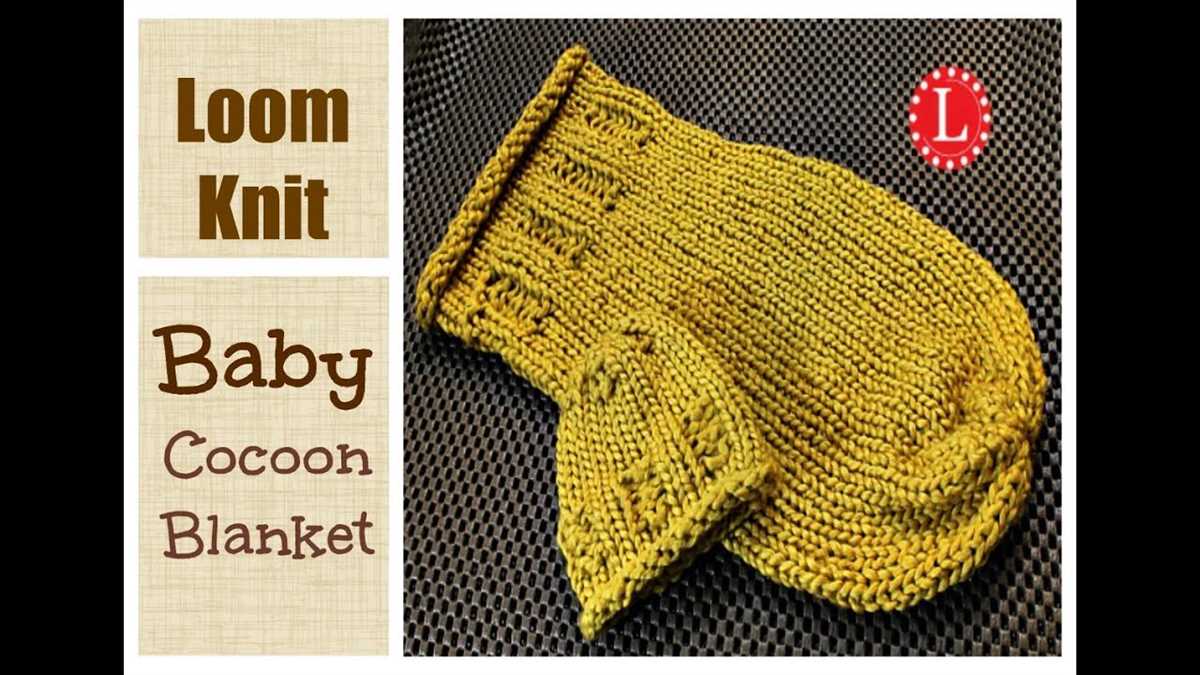
- Ravelry – A popular website for knitters and crocheters, offering a wide selection of patterns, yarns, and community forums.
- LoveKnitting – An online knitting store that also provides a variety of free patterns for all skill levels.
- AllFreeKnitting – A website that offers a collection of knitting patterns, tutorials, and tips.
- KnittingPatternsGalore – An extensive resource for knitting patterns, including blankets, garments, and accessories.
Remember, knitting is a versatile and enjoyable hobby that allows you to create beautiful and functional items. Whether you’re a beginner or an experienced knitter, there is always something new to learn and explore. So, keep knitting, sharing your work, and discovering new patterns to inspire your next project!